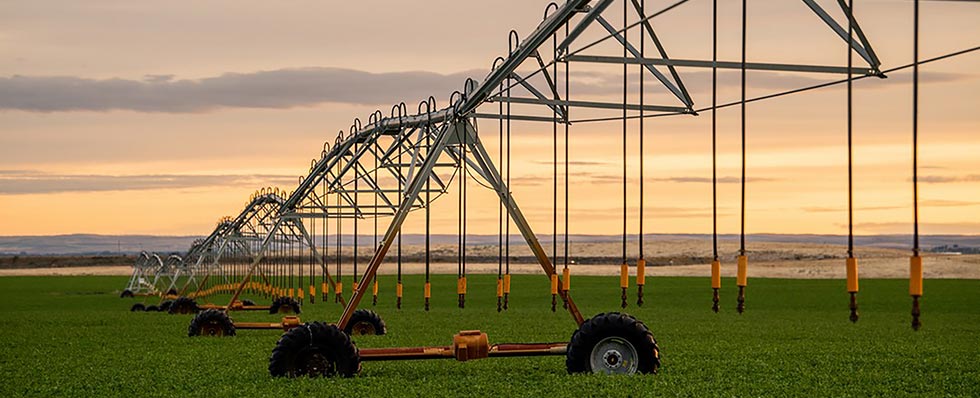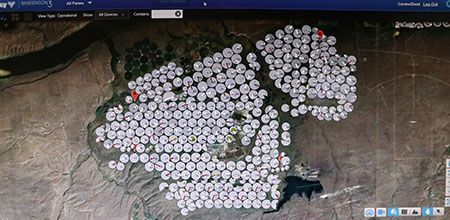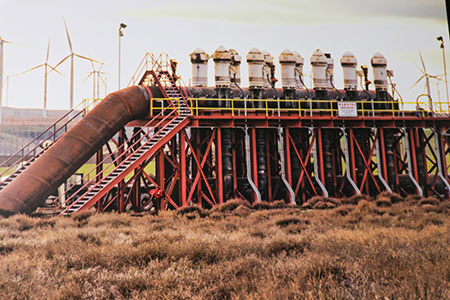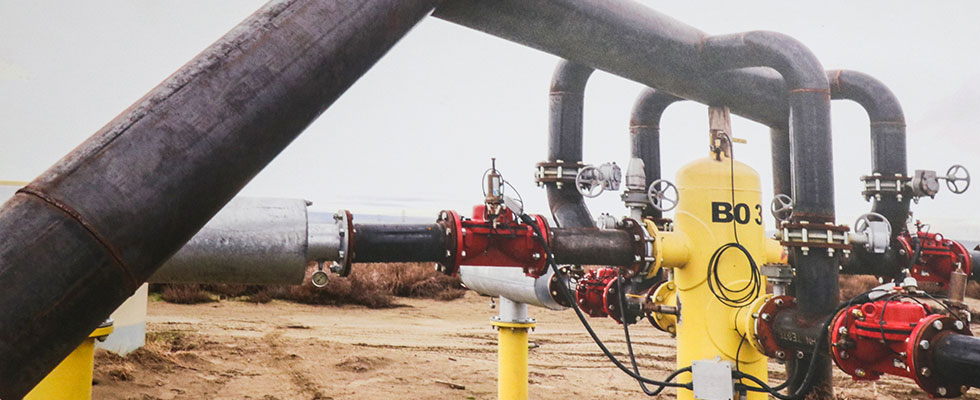
To meet the growing population and increased demand for food, farmers and agricultural companies are turning to the internet of things (IoT) for analytics and greater production capabilities. Technological innovation in farming is nothing new. Handheld tools were the standard hundreds of years ago, and then the Industrial Revolution brought about the cotton gin. The 1800s ushered in grain elevators, chemical fertilizers and the first gas-powered tractor. Fast forward to the late 1900s, when farmers started using satellites to plan their work.1
The IoT is set to push the future of farming to the next level. Smart agriculture is already commonplace among farmers, and high-tech farms are becoming the standard thanks to agricultural drones, sensors, supervisory control and data acquisition (SCADA) and remote alarm notification systems.

Threemile Canyon Farms
Located in Oregon’s Columbia Basin, Threemile Canyon Farms LLC was founded in 1998 with a vision to create a modern agriculture operation at the intersection of productivity and sustainability. Threemile has built its farming operations on a closed-loop system of sustainable agriculture that recycles organic waste by putting it back to use in the soil, resulting in little to no waste while increasing cost savings.
Growing more than a dozen different fruits and vegetables that are cultivated in 363 crop circles that average up to 120 acres each is no small task. The crops are on different irrigation and fertilization regimens, and the organic crops require an even more specialized program. This farm, which encompasses approximately 140 square miles and over 30,000 acres of irrigated farmland, exemplifies high-tech farming.
Center Pivot Irrigation
Center pivot irrigation, which is 10% to 20% more efficient than furrow irrigation2, is how each circle is watered and fertilized. The irrigation pipes are supported by trusses mounted on wheeled towers that make a circuit of the field under their own power. Each pivot has a custom-made sprinkler package installed that is designed to apply a specific amount of water on the field. Variable-rate irrigation techniques are also used to turn specific sprinklers on and off depending on the crops’ conditions.
Typically, a main pipeline connects to a cluster—where two to four pivots are fed—with a tank head. The pivot pipes leave this location and go out to the center pivot. These clusters contain all electrical, control wires, water valves and cluster pressures. This central spot is where the pivot control panels are located along with network communications equipment.
Threemile’s Irrigation System
The water, fertilizer, chemical, speed, direction, duration and variable rate can all be controlled—including different combinations, such as operating at a 50-degree angle at 100% capacity then slowing down to 20% and then speeding up again—and programmed into the panels to keep the crops in optimal conditions. Additionally, there is GPS on the end tower so the team knows exactly where a pivot is directed on the crop circle at any given time.

Threemile’s irrigation techniques and management systems increase the cost-effectiveness of crop production, reduce soil erosion and lessen energy requirements—including helping to lower its annual energy bill—while enhancing and sustaining crop production, the environment and water use efficiency. This process allows for an increase in crop production and yield, as well as cost savings. As a responsible steward of the land and resources, Threemile feels it is important not to over fertilize or water.
Mark Ashby, Threemile’s information technology (IT) and automation systems manager, oversees the farm’s control systems and complex network that ensure the crops, and irrigation and fertilizer systems are continuously monitored.
Increased Technology
This technology has been a work in progress for more than a decade. Ashby and his team began by implementing a large wireless network as the foundation for a better, more reliable system that allows them to control the crops’ maintenance to the smallest detail. With the goal of improving reliability and control even further, the pump stations were retrofit with upgraded programmable logic controllers (PLCs) and fitted with medium-voltage variable frequency drives (VFDs) to control the motor/pump speeds to anything between zero to 100%.
This now includes over 200 PLCs, a 140-square-mile wireless umbrella, 25 communication towers, a variety of fiber-optic/cat5/cat6 network connections and Gigabit air fiber connects all the systems.
The architecture of network servers runs a SCADA system integrated with remote alarm notification software. The network servers monitor the conditions on the farm and report and collect data on any change. This information is stored in historian databases for mining and provides analytics for review.
Monitoring the System
This network monitors the water pressure through the pipes that connect to the clusters that then feed each pivot. Monitoring is done via pressure transducers to the clusters. In addition to the pressure and flow being monitored, the team watches many other components. For example, at the river stations, the
water that is pumped out of the Columbia River uses 1,500-horsepower (hp) and 1,250-hp pumps, and high-pressure shutdown techniques for the river and booster stations also require monitoring.

With peak volumes during summer months of up to 200,000 gallons of water per minute being pumped, any aberration from normal levels can lead to devastating consequences including costly machine repairs and damaged crops.
Alarm Notification
When things do not operate as they should, alarm notifications are sent out via SMS or emails that allow Ashby and his team to intervene and rectify the situation.
“I can’t only depend on someone sitting at the control desk to notice everything. For example, it’s a lot easier to pull a pump/motor when we’re alerted to a possible problem than down the road when it burns up; particularly when a rebuilt motor costs up to $50,000,” Ashby said.
In addition to forecasting potential problems, since everything is interconnected, an alarm is critical when something is not working. If one of the 72-inch pipes coming from the river station shuts down, multiple pumps that are pumping between 10,000 to 15,000 gallons of water per minute will stop, leaving the crops vulnerable and causing safety issues.
Having the ability to go back and compare past data to see why an event like this happened helps users prevent future problems. Threemile has a significant investment in pumps and motors, upwards of $200,000 each set. Ensuring that they are running correctly is critical to the farm’s operation and bottom line.
References
Andrew Meola, “Smart Farming in 2020: How IoT sensors are creating a more efficient precision agriculture industry,” Business Insider, Feb. 2, 2021.
ucanr.edu/blogs/blogcore/postdetail.cfm?postnum=1382 (accessed March 23, 2022).

